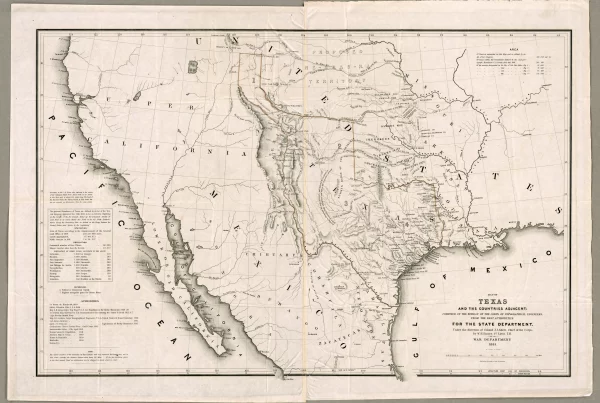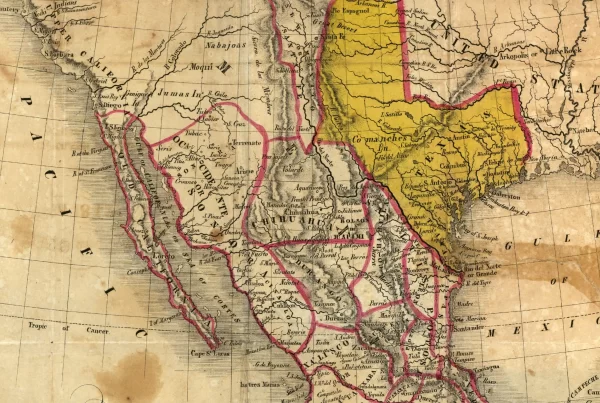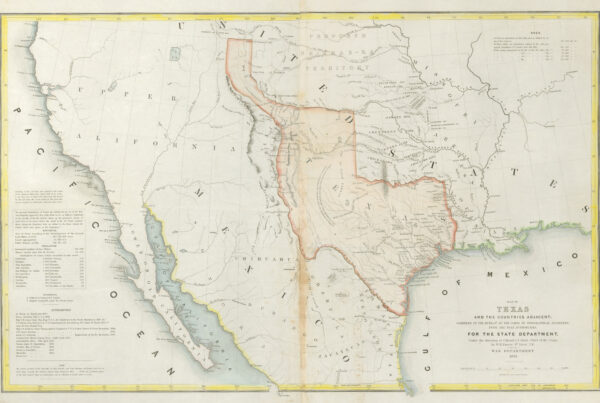Photo, top: One of 12 state senators nicknamed the “Killer Bees,” who hid offsite to prevent the 31-member Texas Senate from reaching a quorum on two bills in 1979. Courtesy Texas State Library and Archives Commission.
Legislative walkouts—also called quorum busting—are rare but significant events in Texas politics. They occur when lawmakers—usually from the minority party—leave the chamber to prevent a quorum and halt proceedings.
While often seen as extreme tactics, walkouts have been deployed in response to contentious issues such as redistricting, tax policy, and voting laws. This article reviews the legal framework governing quorum and attendance in the Texas Legislature, as well as notable historical examples of walkouts in both the Senate and House of Representatives.
Constitutional and Legal Framework

The Texas Constitution provides the basis for quorum requirements and the enforcement powers of the Legislature in cases of absenteeism. Under Article III, § 10, “[t]wo-thirds of each House shall constitute a quorum to do business.” Unlike the U.S. Congress, where the quorum requirement is a simple majority, Texas sets a higher threshold: two-thirds of the membership must be present for either chamber to conduct official business, including voting on bills.
To ensure the presence of a quorum, the Constitution also empowers each chamber to compel attendance. The same section provides that “a smaller number may adjourn from day to day and compel the attendance of absent members, in such manner and under such penalties as each House may provide.” This provision grants the presiding officer, typically the Speaker of the House or the Lieutenant Governor in the Senate, the authority to order the Sergeant-at-Arms to locate and retrieve absent members, potentially by force.
Each chamber’s rules elaborate on these powers. For example, Rule 5, Section 8 of the House Rules allows the Speaker to issue a “call of the House” and instruct the Sergeant-at-Arms to take absent members into custody and bring them to the chamber. The Senate rules contain parallel provisions. Although these enforcement mechanisms are seldom used, they have been invoked in high-profile standoffs, leading to legal and political complications.
The 1979 “Killer Bees” Walkout
One of the most famous walkouts in Texas history occurred in 1979, when twelve Democratic state senators known as the “Killer Bees” went into hiding to block a controversial bill. The legislation in question would have moved Texas’s presidential primary from May to March, a change perceived to benefit incumbent President Jimmy Carter by giving him early Southern victories.
By absenting themselves from the Senate chamber, the twelve senators denied the body a quorum and effectively froze the legislative process. The Lieutenant Governor at the time, William P. Hobby Jr., ordered state police to find and arrest the absent senators. In response, the “Killer Bees” went into hiding in an Austin garage apartment for several days.
This episode tested the limits of quorum enforcement. Although the Senate could issue arrest warrants, it had no way to compel compliance once the senators left the Capitol grounds. The senators were eventually located, but not before making a powerful political statement. The walkout succeeded in delaying the bill, though it ultimately passed. Nevertheless, the event remains a case study in the use of quorum busting as a political weapon.
The 2003 House Walkout to Ardmore, Oklahoma
Another high-profile walkout occurred in 2003 when more than fifty House Democrats fled to Ardmore, Oklahoma, to protest a Republican-led congressional redistricting plan. The plan was widely seen as an attempt to redraw districts mid-decade to favor GOP candidates, and Democrats accused Republicans of political overreach.
By leaving the state, the House Democrats placed themselves outside the jurisdiction of Texas law enforcement. Under House Rule 5, Section 8, the Speaker may direct the Sergeant-at-Arms to detain absent members “by warrant of arrest, if necessary.” However, those powers do not extend across state lines. As a result, the state troopers sent to retrieve the lawmakers were legally unable to arrest or compel them to return from Oklahoma.
This tactic, while controversial, delayed consideration of the redistricting bill until a special session was convened. The Democrats’ move drew national attention and was portrayed as both principled resistance and partisan obstruction, depending on political perspective. The redistricting plan eventually passed during the special session, but the walkout underscored the strategic value—and limitations—of fleeing the state.
The 2021 Voting Bill Walkout
In 2021, a large group of House Democrats again used the tactic of fleeing the state to block a Republican-backed bill that would overhaul Texas election laws. After initially walking out at the end of the regular session to prevent a final vote, more than fifty members left for Washington, D.C. during the first called special session. Their departure once again broke quorum in the House, and legislative business ground to a halt.
In retaliation for the walkout, Governor Abbott used his line-item veto authority to eliminate Article X from the state budget—a section funding the Legislature and its staff. He claimed lawmakers should not receive taxpayer funding after “abandoning their responsibilities.”
Abbott also called successive special sessions, and House leadership initiated a “call of the House,” authorizing the issuance of civil arrest warrants to compel absent members to return. These warrants, issued under the chamber’s constitutional and procedural authority, directed the Sergeant-at-Arms to detain lawmakers who remained in Texas.
However, the Legislature’s power did not extend beyond state lines, rendering the warrants ineffective while members remained in Washington. This incident brought renewed attention to the legality and limits of quorum enforcement. Some lawmakers challenged the warrants in court, raising constitutional questions about separation of powers and the due process rights of legislators. The Texas Supreme Court ultimately declined to block the warrants, reinforcing the Legislature’s authority to enforce attendance through civil—not criminal—means.
As the special session dragged on and pressure mounted, a few Democratic members quietly returned to Texas in August—enough to reestablish quorum in the House. Their return enabled the chamber to resume business and pass the election bill that had sparked the walkout. These members faced sharp criticism from within their party, particularly from progressive activists and colleagues who remained in D.C. or continued to oppose the legislation. Some accused the returnees of undermining party unity and weakening the broader strategy of resistance.
Abbott’s veto of legislative branch funding prompted a legal challenge from Democrats and legislative staff, raising constitutional questions about separation of powers. The Texas Supreme Court declined to intervene, allowing the veto to stand. However, during a later special session, the Legislature passed—and Abbott signed—House Bill 5, restoring Article X funding and effectively ending the standoff.
Legal and Political Implications
Legislative walkouts raise complex questions about constitutional structure, rule enforcement, and democratic legitimacy. While the Constitution and chamber rules clearly empower the Legislature to compel attendance, actual enforcement is constrained by jurisdictional limits, political considerations, and public perception.
One key legal limitation is the absence of criminal penalties for failing to appear. Arrest warrants issued under a call of the House or Senate are civil in nature; members are not charged with a crime but may be taken into custody and returned to the chamber. Moreover, these powers are largely symbolic once members have left the state.
Another point of ambiguity lies in the interpretation of “quorum to do business.” Although a chamber may convene with fewer than two-thirds present, it may not pass legislation or adopt resolutions. This distinction has been used by both parties to justify remaining in session without voting on substantive matters.
Quorum busting, while legally permissible, also carries political costs. Lawmakers who participate may face criticism for abandoning their duties or disrupting governance. In response, they often frame their actions as necessary resistance to extreme legislation. Public opinion can swing either way, and media coverage plays a key role in shaping the narrative.
From a constitutional perspective, walkouts highlight the tension between procedural rules and substantive outcomes. Texas’s supermajority quorum requirement was designed to foster broad consensus, but it also creates opportunities for minority obstruction. This structural feature, coupled with the inability to criminally penalize absentee lawmakers, makes walkouts a potent—if rare—tool in Texas legislative politics.


